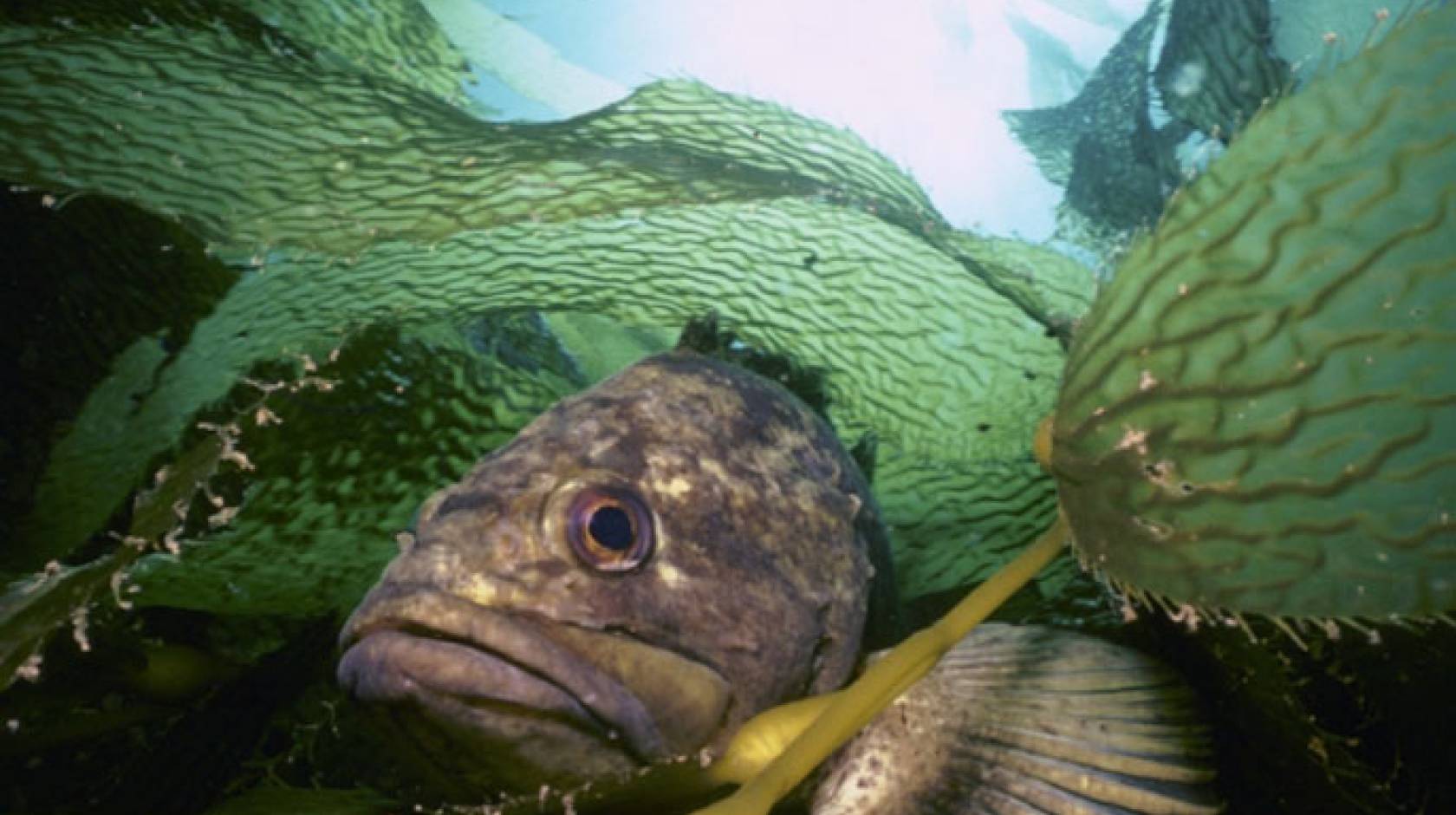Harrison Tasoff, UC Santa Barbara

Ecosystems are in flux as rising temperatures affect where animals can live and how they behave. And a new study suggests that some species are feeling the heat more than others.
An international team of scientists including Douglas McCauley, an associate professor at UC Santa Barbara, has discovered that marine animals are especially vulnerable to rising temperatures. The results appear in the journal Nature.
“We certainly did not discover for the first time that global warming harms for ocean life, but we did discover, arguably, that global warming harms ocean life worse than it does on land,” said McCauley, a marine ecologist in the Department of Ecology, Evolution, and Marine Biology and the university’s Marine Science Institute. “And that, actually, is pretty important to realize because it teaches us where to focus our energy when trying to remediate ecosystems and build out resiliency to climate impacts.”
The team searched the literature for data on the range of survivable temperatures for 318 terrestrial and 88 marine species from 15 different classes of coldblooded animals, such as lizards, fish and spiders. They were curious what temperature range each animal could handle, and how close it was living to its thermal maximum. They also asked how the habitats in this safe temperature range will move as climate change progresses.
Their key finding was that more species are living in the higher end of their temperature tolerances in the ocean than on land. This is likely early evidence of ocean warming, according to McCauley. “The species in the ocean appear to be much more sensitive to global warming as many are already sitting so close to the ceiling of the range of temperatures they can safely tolerate,” he said. This could explain why local extinctions are currently proceeding at twice the rate in the ocean as on land.
In fact, by compiling data on some of the species’ historical ranges and comparing it to their current ranges, McCauley could actually see widespread population die-off in the warmer sub-regions. Take the American lobster for example. This iconic species is synonymous with New England, and historically it was commonly caught in states like New York. But the lobster populations there have dropped precipitously. Between 1996 and 2014 New York’s registered lobster landings decreased by 97.7 percent.
No shade under the sea
Terrestrial and aquatic animals have different challenges and strategies when coping with extreme temperatures, any of which could factor into the differences, the researchers found. Water is very good at retaining heat, so marine animals don’t experience the daily or seasonal temperature fluctuations that most terrestrial animals deal with. McCauley hypothesized that the lack of experience with large temperature fluctuations may be one reason marine species are more susceptible to rising temperatures.
For instance, a lizard native to the eastern seaboard might experience a difference as high as 50 degrees Fahrenheit between day and night, and perhaps 120 degrees between summer and winter. Those temperature ranges are unheard of for marine species.
Land animals can also take advantage of thermal refuges — a burrow, a shady tree, a stream — to cool off on a daily basis. But that doesn’t work underwater. “There’s no such thing as a cool shady spot under the sea,” McCauley said. In any given area all the water equalizes to the same temperature.
Some marine animals seek refuge in cooler water deeper down, but ocean ecosystems can vary over the span of a few dozen feet. Light level, water pressure and food availability quickly change as you dive, meaning this isn’t a strategy that most animals can adopt.
“So, while it may seem like, ‘why don’t you just go down there to beat the heat,’ for some of these marine animals, that is as infeasible as suggesting deer could adapt by just setting up shop in caves,” McCauley said. The differences are about as extreme.
‘Dealing with climate change is a triage exercise’
McCauley hopes that a better understanding of the scope and scale of global warming’s effects on wildlife will help us tailor our response most efficiently. “Dealing with climate change is a triage exercise where we have to figure out who’s most in trouble, get there and get ahead of the problem as best and as fast as we can,” he said.
Reducing carbon emissions would make the greatest impact, said McCauley. As we work towards this critical long-term goal, we can also make progress by removing other stressors affecting ocean life. Reducing nutrient and plastic pollution, better managing global fisheries and creating marine reserves can all alleviate pressures on marine animals, giving them a better chance of adapting to long-haul challenges like climate change, he added.
Some species, like the American lobster, are slowly shifting their range north, but not all animals can do this. Both on land and in the sea, geography and barriers can keep animals from moving to cooler areas. Species living on isolated islands, or in the shallow waters around them, are perfect examples of this.
Habitat fragmentation only exacerbates the problems associated with these geographic barriers. “If you have species becoming climate refugees that have to flee overheating habitats,” McCauley noted, “roads and fences are going to slow them down or make it downright impossible to travel to cooler habitats.”
Human impact
Humans depend on the ocean for their lives and livelihoods, and the researchers are concerned that the patterns they found will affect us as well.
“The findings suggest that new conservation efforts will be needed if the ocean is going to continue supporting human wellbeing, nutrition and economic activity,” said lead author Malin Pinsky, an associate professor at Rutgers University, New Brunswick.
“This research was focused more on understanding how the is ocean changing. And the next step is answering the question, ‘Who cares?’” McCauley said. “I want to know, in particular, if and how these impacts on ocean health matter to human health.”
McCauley and his collaborators have joined health scientists at Harvard University and social scientists at UC Santa Cruz to assess how the disappearance of ocean animals might affect human health and nutrition. The researchers will head to the island nation of Kiribati to work with local communities in understanding how some of these changes may influence them. This includes measuring the fish populations, speaking with fishermen and working with local health officials to measure community nutritional health.
“In many places like this, oceans are a local life support service,” say McCauley. “In the more remote islands it can be fish and rice for dinner or, if you run out of fish, just rice.”

